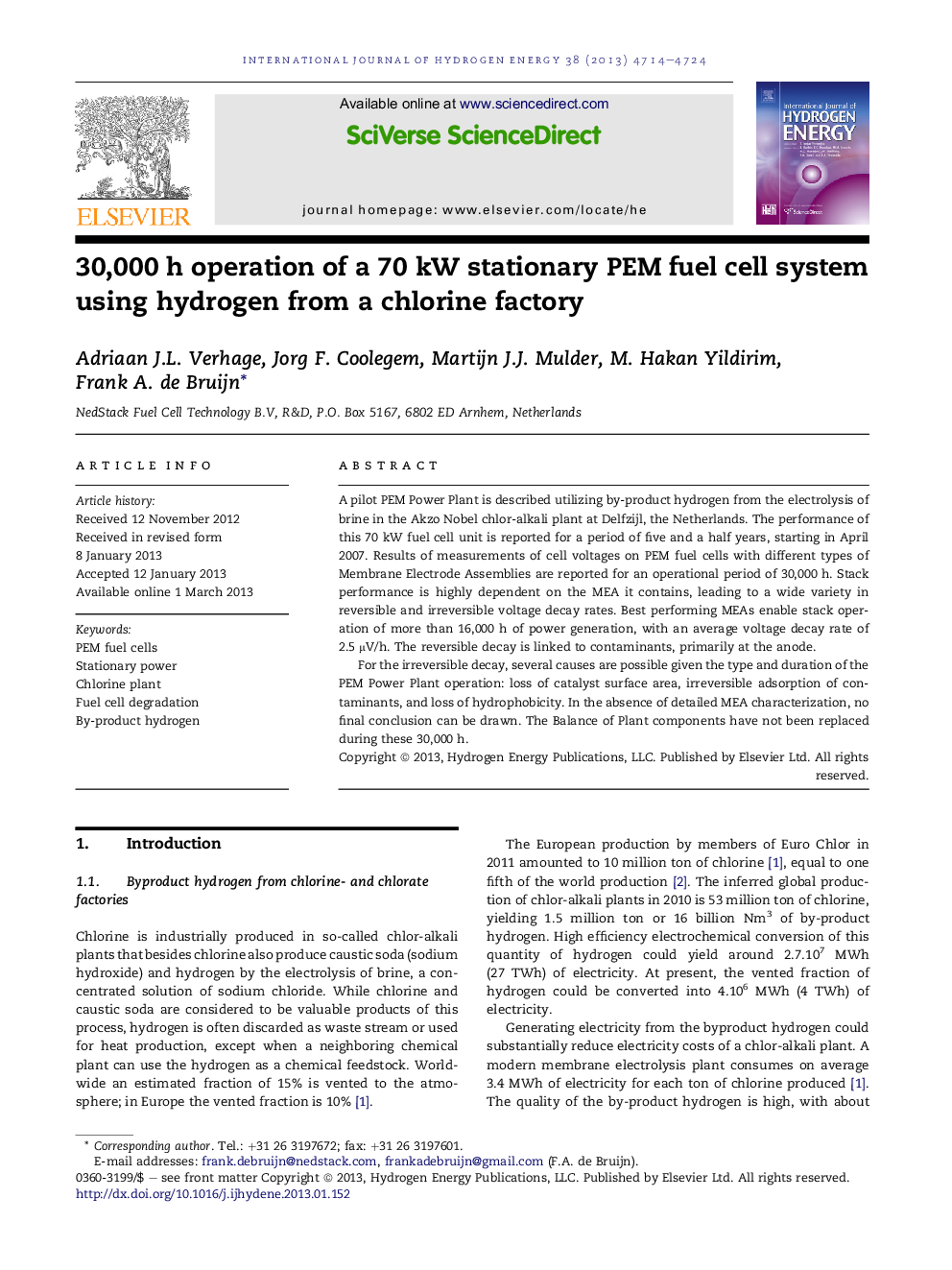| Article ID | Journal | Published Year | Pages | File Type |
|---|---|---|---|---|
| 1278165 | International Journal of Hydrogen Energy | 2013 | 11 Pages |
A pilot PEM Power Plant is described utilizing by-product hydrogen from the electrolysis of brine in the Akzo Nobel chlor-alkali plant at Delfzijl, the Netherlands. The performance of this 70 kW fuel cell unit is reported for a period of five and a half years, starting in April 2007. Results of measurements of cell voltages on PEM fuel cells with different types of Membrane Electrode Assemblies are reported for an operational period of 30,000 h. Stack performance is highly dependent on the MEA it contains, leading to a wide variety in reversible and irreversible voltage decay rates. Best performing MEAs enable stack operation of more than 16,000 h of power generation, with an average voltage decay rate of 2.5 μV/h. The reversible decay is linked to contaminants, primarily at the anode.For the irreversible decay, several causes are possible given the type and duration of the PEM Power Plant operation: loss of catalyst surface area, irreversible adsorption of contaminants, and loss of hydrophobicity. In the absence of detailed MEA characterization, no final conclusion can be drawn. The Balance of Plant components have not been replaced during these 30,000 h.
► PEMFC system operation during 30,000 hours at a chor-alkali plant. ► PEMFC stack operation during more than 16,000 hours on industrial hydrogen. ► Unexpected high variety of stack decay rates depending on MEA type. ► Suspected influence of low concentration hydrogen contaminants on stack performance.
